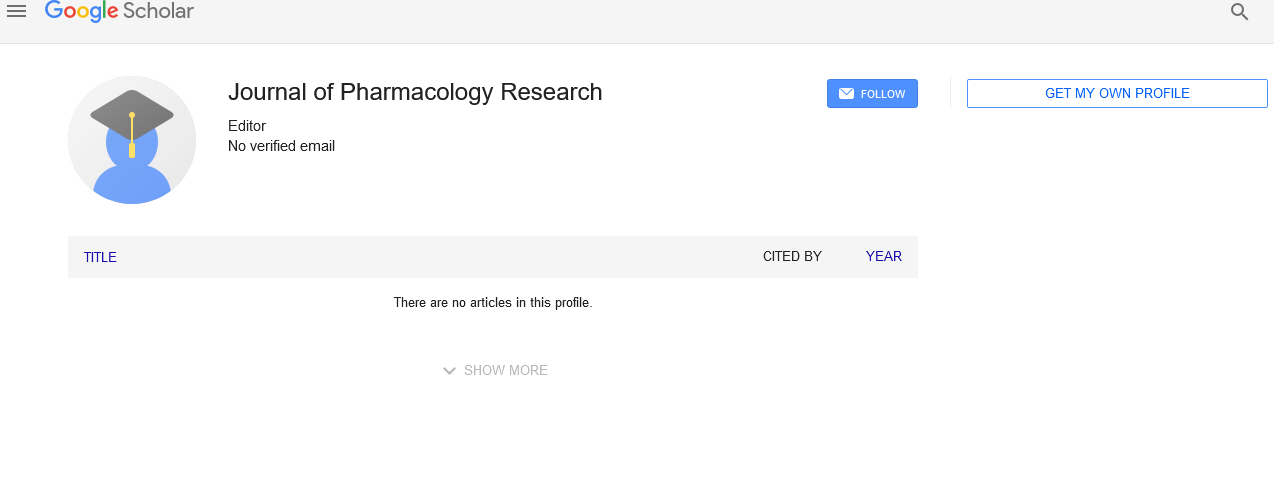Brief note on anti-microbial agents usage in agricultural and medical fields
Received: 09-Aug-2021 Accepted Date: Aug 24, 2021; Published: 31-Aug-2021
Citation: Hey H. Brief note on anti-microbial agents usage in agricultural and medical fields. J Phram Res. 2021;4(4):1.
This open-access article is distributed under the terms of the Creative Commons Attribution Non-Commercial License (CC BY-NC) (http://creativecommons.org/licenses/by-nc/4.0/), which permits reuse, distribution and reproduction of the article, provided that the original work is properly cited and the reuse is restricted to noncommercial purposes. For commercial reuse, contact reprints@pulsus.com
Description
Antimicrobial medications are the best commitment of the twentieth century to therapeutics. Their approach changed the viewpoint of the doctor about the power medications can have on infections. They are one of the couple of medications which can fix, and not simply mitigate illness. Their significance is amplified in the agricultural nations, where infections prevail. As a class, they are one of the most often times utilized just as abused drugs. Medications in this class vary from all others in that they are intended to hinder/kill the contaminating life form and to have no/ negligible impact on the beneficiary. This sort of treatment is called chemotherapy which has come to signify 'treatment of foundational contaminations with explicit medications that specifically smother the tainting microorganism without altogether influencing the host.' The premise of specific microbial harmfulness is the activity of the medication on a part of the organism (for example bacterial cell divider) or metabolic cycles (for example folate combination) that isn't found in the host, or then again high fondness for certain microbial biomolecules (for example trimethoprim for bacterial dihydrofolate reductase). Because of similarity between the harmful cell and the pathogenic organisms, treatment of neoplastic infections with drugs is too called 'chemotherapy'. Anti-microbials These are substances created by microorganisms, which specifically smother the development of or kill different microorganisms at exceptionally low fixations. This definition avoids other normal substances which additionally repress microorganisms however are delivered by higher structures (e.g. antibodies) or even those created by organisms yet, are required in high focuses (ethanol, lactic corrosive, H2O2). Chemotherapeutic specialist was confined to manufactured mixtures, yet presently since numerous antiinfection agents and their analogs have been integrated, this measure has become superfluous; both manufactured and microbiologically created drugs should be incorporated together. It would be more significant to utilize the term Antimicrobial specialist to assign manufactured just as normally acquired medications that constrict microorganisms.
Issues that arise with the use of amas
1. Poisonousness:
(a) Local irritancy: This is applied at the site of organization. Gastric bothering, torment and ulcer development at the site of i.m. infusion, hrombophlebitis of the infused vein are the entanglements. Essentially all AMAs, particularly erythromycin, antibiotic medications, certain cephalosporins and chloramphenicol are aggravations.
(b) Systemic poisonousness: Almost all AMAs produce portion related and unsurprising organ poison levels. Trademark poison levels are displayed by distinctive AMAs. Some have a high remedial file portions up to 100-crease reach might be given without obvious harm to have cells. These incorporate penicillin’s, few cephalosporins, and erythromycin.
Others have a lower helpful list portions must be individualized and harmfulness observed for, e.g.: Aminoglycosides: eighth cranial nerve and kidney harmfulness. Antibiotic medications: liver and kidney harm, antianabolic impact. Chloramphenicol: bone marrow wretchedness. Still others have an extremely low restorative file— use is profoundly confined to conditions where no reasonable option is accessible, e.g.: Polymyxin B: neurological and renal harmfulness. Vancomycin: hearing misfortune, kidney harm. Mphotericin B: kidney, bone marrow furthermore, neurological poisonousness.
2. Extreme touchiness responses basically all AMAs are fit for causing extreme touchiness responses. These are erratic and is connected to portion. The entire scope of responses from rashes to anaphylactic shock can be delivered. The more normally elaborate AMAs in extreme touchiness responses are penicillin’s, cephalosporins, sulfonamides, and fluoroquinolones.
3. Medication opposition: It alludes to lethargy of a microorganism o an AMA, and is similar to the wonder of resilience seen in higher life forms. Normal obstruction Some microorganisms have continuously been impervious to certain AMAs. They need the metabolic cycle or the objective site which is influenced by the specific medication. This is y and large a gathering or animal types trademark, for example ram-negative bacilli are ordinarily unaffected by penicillin G; vigorous organic entities are not influenced by metronidazole; while anaerobic microscopic organisms are not hindered by aminoglycoside anti-infection agents, or M. tuberculosis is unfeeling toward antibiotic medications.





